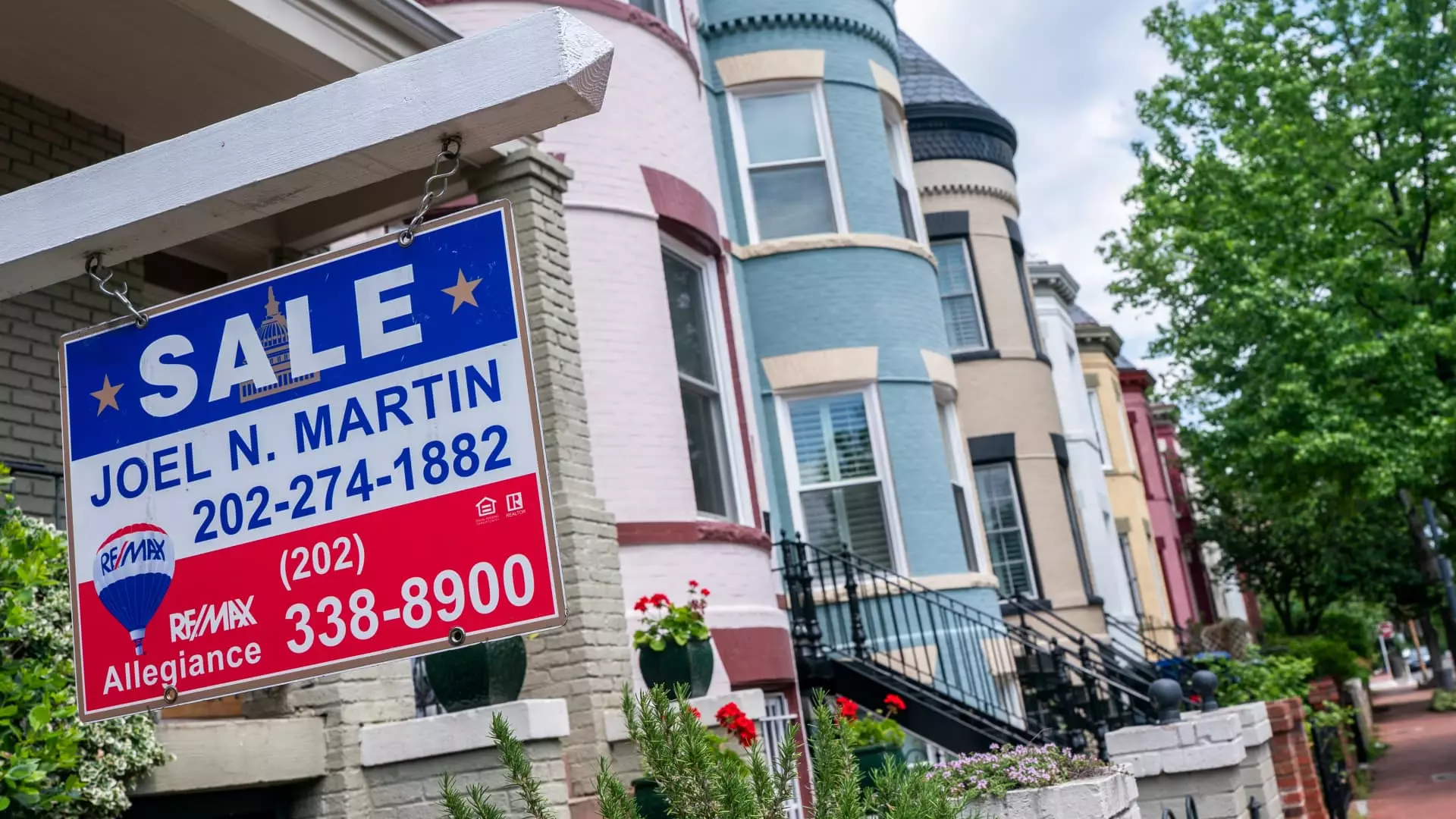The current spring housing market is emblematic of a broader economic malaise, one characterized by stagnation and uncertainty. The National Association of Realtors (NAR) recently reported a troubling 0.5% drop in sales of previously owned homes from March to April, bringing the annualized rate down to a meager 4 million units. This represents the slowest pace for the month of April since the dark days of 2009—a year when the economy was reeling from the Great Recession. It’s a disheartening statistic that reveals not only a declining market but also a consumer base that is losing faith in homeownership as a viable path forward. With sales down 2% compared to last April and expectations falling flat, it’s clear that a cloud of uncertainty hangs over potential buyers.
Complexities of Consumer Confidence
At the heart of this sluggish market lies a critical issue: consumer confidence, or rather the lack thereof. Homebuyers today are grappling with elevated mortgage rates that have risen higher than many anticipated, which ultimately leaves them hesitant to engage in such a monumental investment. Lawrence Yun, NAR’s chief economist, succinctly articulated that home sales have lingered at about 75% of their pre-pandemic levels for a troubling three years. Despite the economy adding around seven million jobs during this period, the anticipated “pent-up demand” for housing remains largely unrealized. The dilemma is not a lack of interest; it is the crippling fear of financial instability that prevents many from taking the plunge into homeownership.
Inventory Levels: A Double-Edged Sword
Despite bleak sales figures, there is a subtle glimmer of hope in the form of rising inventory. April saw a notable 9% month-to-month increase in available homes, leaving buyers with a staggering 1.45 million properties to choose from. However, analysis reveals that while this growing inventory might appear favorable, it also indicates deep-seated issues in demand. Though a 4.4-month supply of homes is a step above last year’s 3.5-month supply, it remains under the six-month threshold that denotes a balanced market. This disparity prompts the question: is this inventory growth helping buyers, or merely a reflection of dwindling interest?
With homes lingering on the market for an average of 29 days, it becomes apparent that buyers are under no pressure to act quickly. This environment allows for negotiations that can lead to more favorable conditions for buyers, yet the diminishing pace of price appreciation serves as a concerning counterpoint. The median price for an existing home sold for $414,000 in April reflects a paltry year-over-year increase of just 1.8%. While prices still hover at record highs for the month, they are appreciating at the slowest rate since July of the previous year.
A Divide in Market Segmentation
Delving deeper into the market dynamics reveals an unsettling dichotomy: while the higher end of the real estate market is witnessing modest gains, the lower tiers are feeling the pinch. Sales of homes priced above $1 million rose nearly 6% from the previous year, indicating that wealthier buyers continue to navigate the market with relative ease. Conversely, properties in the $100,000 to $250,000 range dipped over 4%. This polarization exacerbates existing inequalities, as struggling first-time buyers find affordability slipping further from their grasp.
This economic landscape is further muddied by rising cancellation rates, which have surged to 7% of sales in April. This stark increase—up from a more typical 3% to 4% range—suggests that potential buyers are increasingly cautious, pulling back even after initiating purchases. It’s a telling trend that underscores the importance of stability, both in the economy and the housing market, which remains frustratingly elusive.
Implications for Future Trends
The overall trajectory of the housing market indicates that more significant shifts may be on the horizon if prevailing conditions do not improve. While there is a wealth of inventory and opportunities for negotiation, absent a decline in mortgage rates or a surge in consumer confidence, the housing market will continue to be mired in uncertainty. As Lawrence Yun stated, the current market may still retain a seller’s edge; however, prolonged stagnation could warrant a reevaluation of strategies both from sellers and buyers alike.
The struggle for equilibrium within the housing market encapsulates broader socio-economic challenges, making it imperative that we actively seek solutions to restore faith in homeownership as a cornerstone of the American dream. The path forward will demand innovative thinking and a willingness to adapt to the evolving landscape—after all, a stable economy hinges on confident homeowners.

